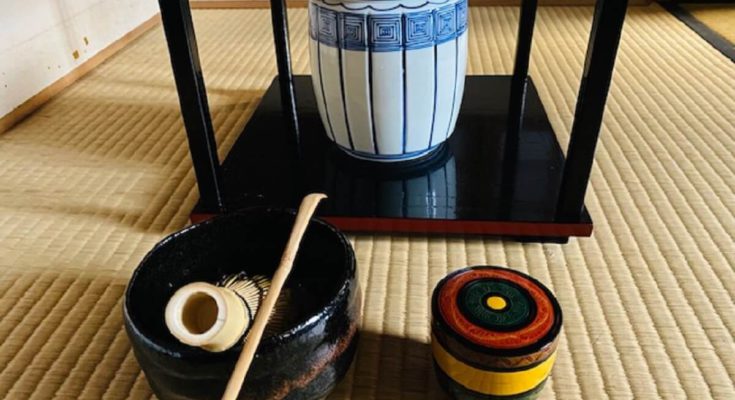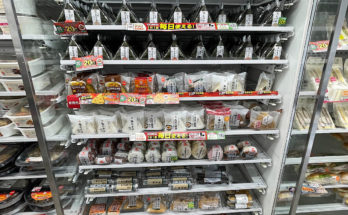What are your favorite drinks? Coffee, tea, water, pop, beer, wine, milk, juice…there are many kinds of drinks here and there. Even though the variety of drinks might differ from country to country, I guess people enjoy drinking something every single day. In Japan, we can get our favorite drinks easily at convenience stores, supermarkets, cafes, restaurants, vending machines and so on. However, there is one drink that we can’t get easily.
That is matcha served in a tea ceremony!
When it comes to matcha, as you know, there are plenty of drinks and snacks with matcha flavor. Do you like Matcha Frappuccino at Starbucks? Have you tried matcha flavored Kit Kat? Also, let me mention that I’ve already written about a variety of matcha products from Häagen-Dazs in my article before.
There is no doubt that matcha is one of the most popular flavors in the world now. This beautiful, lush green all started from a Japanese traditional culture, a tea ceremony!! Today, I’d like to share three tips for beginners to enjoy a tea ceremony in Japan.

☆What is “tea ceremony?”
If I write about the details of the meaning of a tea ceremony and how to do it, this article will be a never-ending story. Or I should say, “You are asking the wrong person!” However, I can say that it’s not just for drinking matcha but for calming down and enjoying all processes full of thankfulness and hospitality.
Now, are you ready to open this tiny slide door to the unique world? Let’s calmly get in!

Samurai needed to take off their swords to go through this tiny gate.
Tip1~Don’t step on the edge of tatami!~

It’s considered rude to step on the edge of a tatami mat. There are some reasons, but let me tell you about some of them. It is said it’s a border between the host and the guests, or the blessed world and ordinary world. Also, there is a proverb that says, “The edge of tatami is the head of your parents,” so we should respect it. Another reason is to protect the tatami mat. Since the edge is fragile, it is encouraged not to step on it.
Tip2~Eat up the sweet before tea is served!~

At a tea ceremony, Japanese sweets are served before the tea is ready. There are a variety of beautiful sweets depending on the season. If the big plate is served in front of you, it’s your turn. Take just one of the sweets on your paper called kaishi and pass the plate to the next person on your left.
Let’s say when you are at a cafe, your coffee and cake are served almost at the same time, and you enjoy drinking and eating altogether, right? The way is different here. You have to eat up the sweet first. After eating it, you must be thirsty and craving a drink. It’s the right time to enjoy matcha! All of this procedure is to taste matcha to the fullest.
Tip3~Slurp and drink up all tea!~

It is said that matcha tastes best just after it is served. Once you hold the tea bowl, don’t put it on the tatami mat before you drink it all. There are several schools for a tea ceremony, so it might not apply to all, but let me share a Japanese phrase to describe how to drink matcha. It is said, “Mikuchi han(三口半).” It means you should finish drinking in three and a half sips. Each sip has a meaning. First, empty your heart. Second, enjoy the taste of matcha. Third, let it travel all through your body. Lastly, share your experience with other guests.
The more important thing is to slurp when you drink it up. It is called “Suikiri(吸い切り)” in Japanese. It becomes a sign to tell the host, “I’ve finished drinking,” and it shows how tasty the matcha was. You’d be thinking that slurping is a big no-no, but this is a beautiful sound that Japanese people have cherished for a long time.

Top right: Nijiriguchi にじり口=Entrance of a tea room
Bottom left: Kama 釜=Kettle
Bottom right: Tokonoma床の間=Alcove
☆“Welcome to Japan! Tea is ready!!”
Now, do you feel like experiencing a tea ceremony? If you have a chance to visit Japan, you can surely find some places for foreign tourists to enjoy a tea ceremony. Today, I introduced three tips, but just take it easy! To tell the truth, there are many Japanese people who don’t know about them. In my eyes, the important thing is to follow the host and enjoy the soothing time.
The history of tea in Japan goes back to the 8th century. It was brought from China. By undergoing some changes, it is said that Sennorikyu(千利休) completed the world of tea ceremony in the 16th century. I believe this is the origin of our well-known spirit, “hospitality!” We’re waiting for you with open arms!!

Last of all, let me introduce this hanging scroll. You can see three kanji letters 点茶来. It means, “Welcome! Tea is ready!”
Actually, this is my grandfather’s work. He passed away exactly on the day I was born. I hope he is enjoying having matcha and reading this article from up above.
掬翠園 ― 鹿沼三名園…栃木県鹿沼市の庭園。 | 庭園情報メディア[おにわさん] (oniwa.garden)
Working for an English language school. My source of energy is our students’ smiles full of curiosity. I love visiting my friends in and outside of Japan.





 HTJ has a YouTube page! Check it out
HTJ has a YouTube page! Check it out
I didn’t know about Matcha and tea ceremony despite of I am Japanese.
Plus, I really enjoyed read your article!
Thank you for your sharing🌈🥰
Thanks for reading my article and leaving a comment, Milky❤️I hope you and everyone in the world have a relaxing time with a cup of tea!!
Hi, Rei san!
Thank you for sharing about Maccha.
I’m sure your grandfather enjoys your article, too.
I didn’t know the slurping sound tells the host “finished” and “it was good”!
Japanese have a lot of interesting cultures.
I work for a center for international students as a clerk, and I often think they know about Japanese culture much more than me and I’m learning about Japan here!
Akiko
Hi Akiko-san!
Thanks for mentioning my grandpa. Your heart-warming comments always motivate me a lot. As you said, many foreign people know much about Japan. We have to learn and cherish our culture more, don’t we?